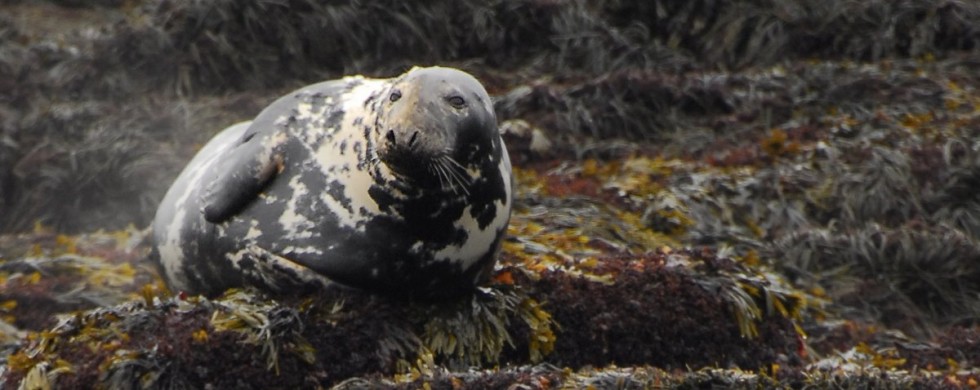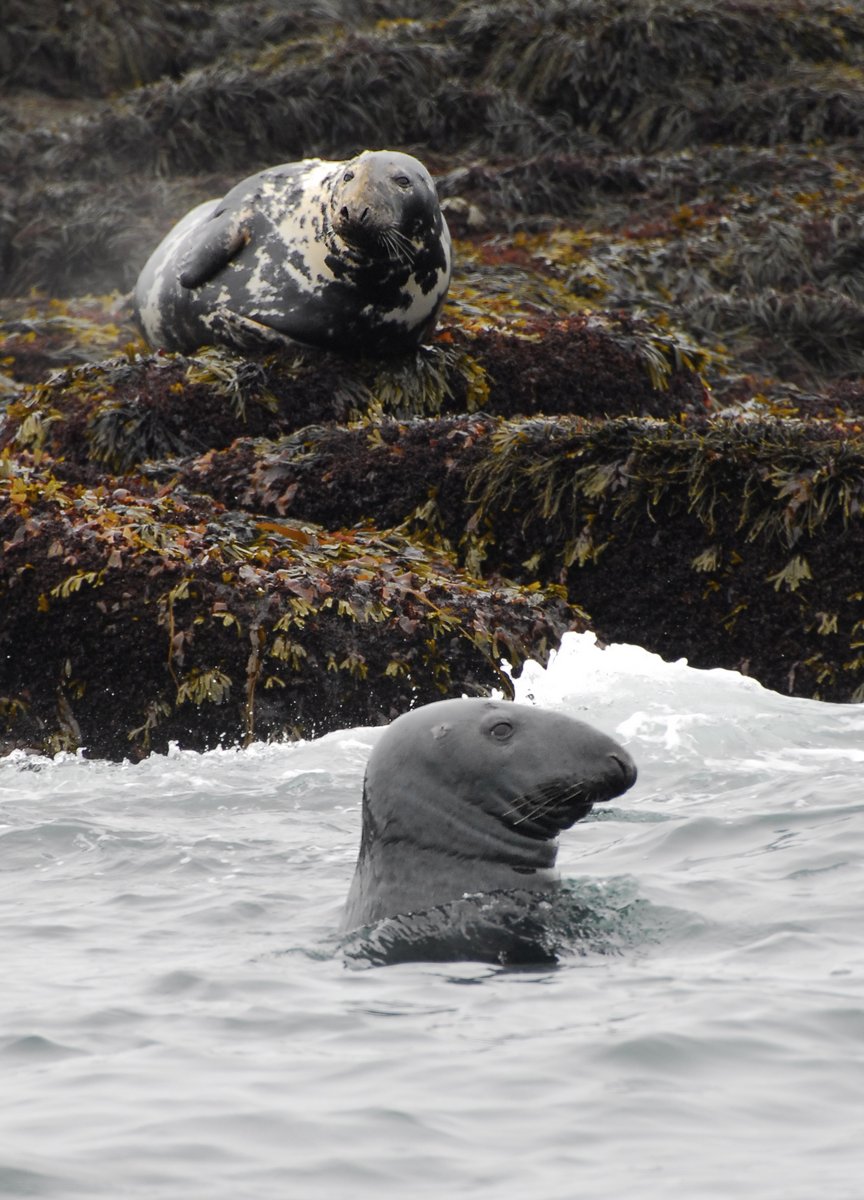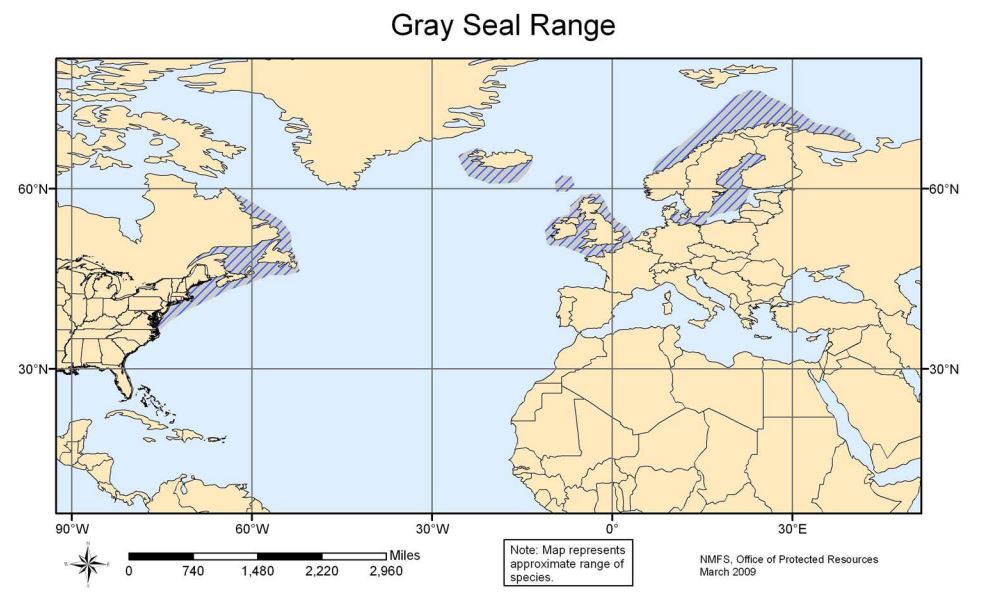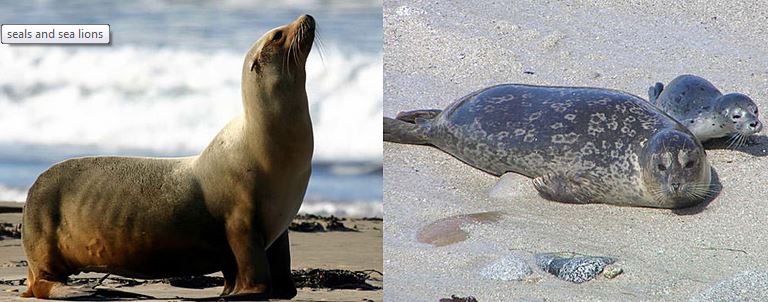
30
2014Seal of Confusion
Shot of the Month – April 2014
 This month a visit with the “hooked-nosed sea pig.” I know them sounds like fight’n words but this description is simply the translation of the scientific name of the Gray Seal, two of which are shown in this photo taken off the coast of Maine.
This month a visit with the “hooked-nosed sea pig.” I know them sounds like fight’n words but this description is simply the translation of the scientific name of the Gray Seal, two of which are shown in this photo taken off the coast of Maine.
Halichoerus grypus = hooked-nosed sea pig
Check out the profile of the guy in the water and you can understand why folks in Canada also refer to them as the “horsehead” seal.
Males tend to have a dark brown-grey to black coat with a few light patches. Females are generally light gray-tan, lighter on the chest, with dark spots and patches. Based on this, I posit that we have a male in the water and a female resting on the rocks above.
Gray seals are large — they are 8-10 feet in length and can weigh between 370-680 pounds. Males can be twice the size of females.
Gray seals eat many types of fish though sand eels are a particular favorite. They can eat 11 pounds of food per day and can dive up to 250 feet in search of prey. The seals are opportunistic feeders and will eat the occasional sea bird, octopus, lobster…
The gray seal lives in three distinct populations (total global population is about 300,000):
1. Western Atlantic (population 150,000): Eastern Canada and Northeastern United States
2. Eastern (130,000 – 140,000): Great Britain, Iceland, Norway, Denmark, Faroe Islands, and Russia
3. Baltic Sea (7,500)
Have a hard time remembering the difference between sea lions and seals? I feel your pain. Here’s the skinny.
The term “seal” is rather vague and captures a range of creatures that are categorized into 3 taxonomic families.
1. True Seals (Phocidae): There are 18 types of true seals — members of this group do not have visible ears and use a belly crawl to get around on land. Gray seals are member of this family.
2. Eared Seals (Otariids): There are 15 types of this seal — members of this group can rotate their hind flippers forward and “walk” on land. They also have pinnae. Sea lions are found here.
3. Walrus (Odobenidae): The only member of this family is the walrus. The walrus is easily recognized by its large size and tusks.
Sea Lion True Seal
So, all sea lions are seals. But not all seals are sea lions. Got it? If you are still confused, here is a nice article on the differences.
When it comes to seals, the gray seal, however, is the real deal.
Until next month….m



Emmanuel
Great picture. I particularly love the one with more background. It gives one a sense of how well, in terms of color and shape, the seal fits in with its environment.